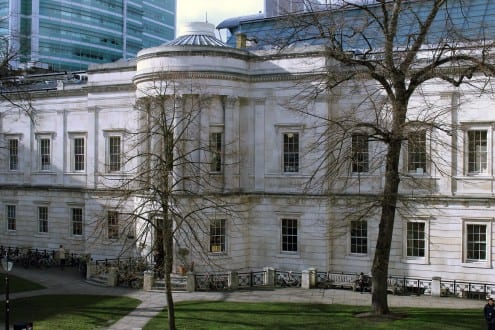Where noble gases won UCL a Nobel Prize
By Oli Usher, on 2 March 2015
Readers familiar with UCL will immediately recognise the Slade School of Fine Art – the North Wing on UCL’s historic (and grade I listed) quadrangle. What they may not know is that the building, which dates back to the 1870s, was originally also home to UCL’s Department of Chemistry.
It was in this building that some of UCL’s most famous contributions to chemistry were made: William Ramsay and his successor J Norman Collie both worked here.
In fact, as far as we can work out, it is the building in the world which has seen the discovery of the greatest number of chemical elements. Ramsay discovered argon, neon, krypton and xenon while working here, as well as isolating helium (which had been seen in the spectrum of the Sun, but not observed here on Earth) and radon. These elements are together known as the noble gases, and Ramsay’s discoveries secured for him the 1904 Nobel Prize in Chemistry – UCL’s first.
In 1913, the year of Ramsay’s retirement, UCL’s Chemistry department moved to a new purpose-built lab immediately behind its old home. The building – which still houses some of the department’s laboratories and offices – is now named after another towering figure in chemistry: Kathleen Lonsdale.
After a century of heavy use and piecemeal remodelling, the building is looking a little tired . A multi-million pound complete refurbishment of the building is planned to begin later this year.
Links
High resolution image
 Close
Close



